Advertisement
Improve the performance of and access to your onboard fuel-water separator with this easy two-for-one project.
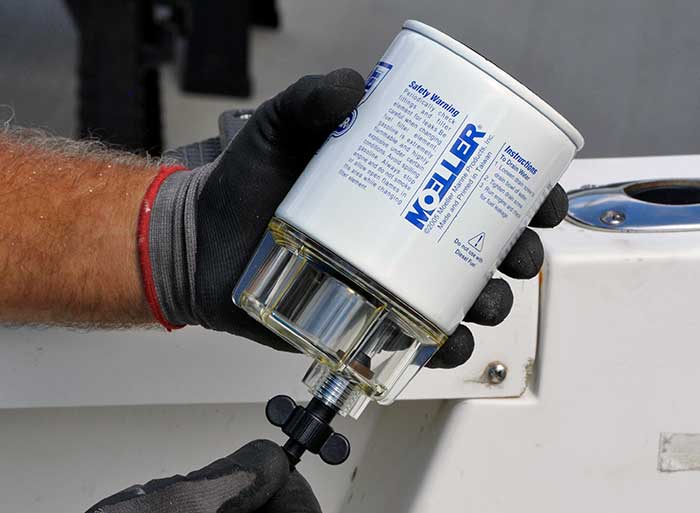
Upgrading the fuel filter on my center-console allowed for improved fuel-water separation performance and easier monitoring.
The on-board fuel filter on my 20-foot outboard-powered center-console neglected to offer the water-separating qualities (not an uncommon problem) or the access I needed to easily check and change it. Here are the steps I took to upgrade the system and enhance the access to it for easy monitoring and changing of the filter element as needed.
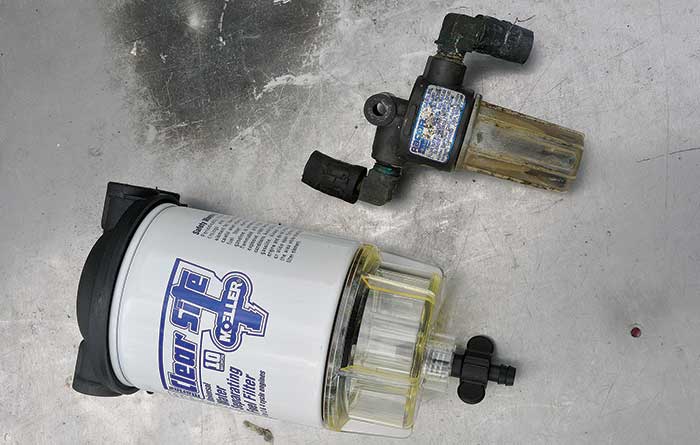
Here you can see the size difference between the OEM Racor filter (top) and the replacement Moeller filter.
Technical Support
Difficulty: Moderate
Tools and Materials:- Screwdriver or drill
- Marker
- Jigsaw
- Rotozip router tool
- 3M 5200 adhesive
- 10-inch Bomar locking access plate
- Moeller 10 micron Clear Site water separating fuel filter kit
Time: 2 hours
Cost: Around $100 for filter and access plate
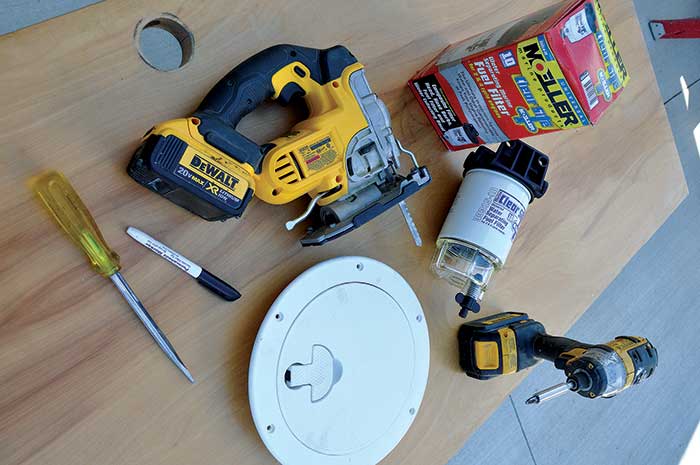
1. The materials required for the upgrade included a 10-inch Bomar locking access plate, which replaces the original 8-inch-diameter pop-off plate, and a Moeller 10 micron Clear Site water-separating fuel filter kit.
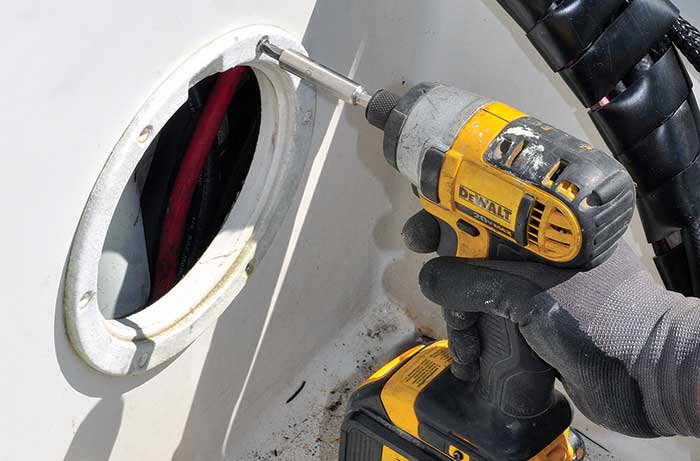
2. I start by removing the original access plate and its mounting base, as well as the original fuel filter which was attached to an OEM glass-over-marine plywood mounting panel with stainless steel screws. You may want to have some rags handy to absorb any fuel that may drip from the fuel lines once their hose clamps are loosened enough to be removed from the barbs on the old fuel filter assembly.
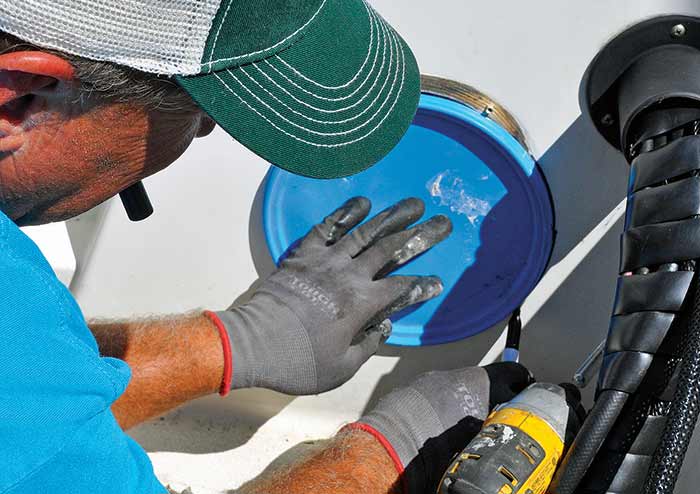
3. Here I'm using a bucket lid that has the same diameter as the outside of the lip on the replacement access plate mounting base as a pattern to trace around for a cutting guide.
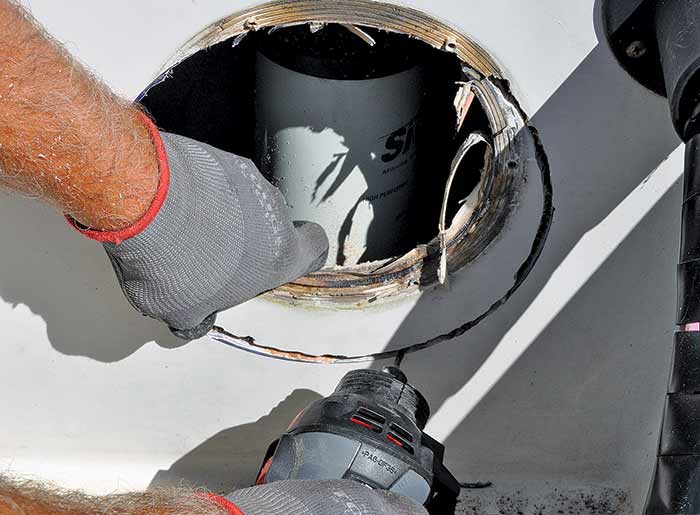
4. Using a jigsaw, I cut around the line I drew to enlarge the hole. I also use a Rotozip router tool to smooth the edges and to help cut a small section I couldn't reach with the jigsaw. A portable vacuum removes any fiberglass dust as I cut.
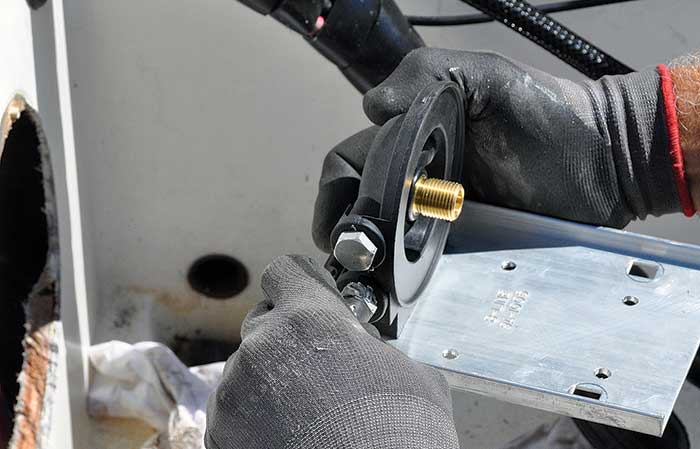
5. After removing the old filter and mount assembly, I attach the new filter mount assembly to the mounting base using stainless steel screws, reconnect the fuel lines to the barbs, and secure with the original hose clamps.
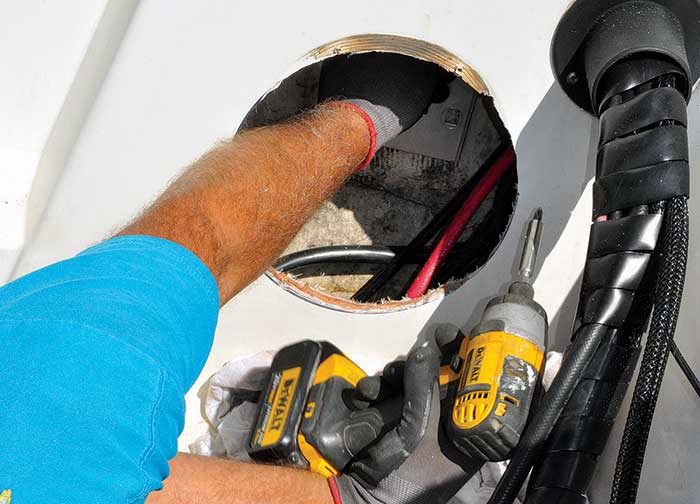
6. Then I mount the new filter assembly in the same place occupied by the old one.
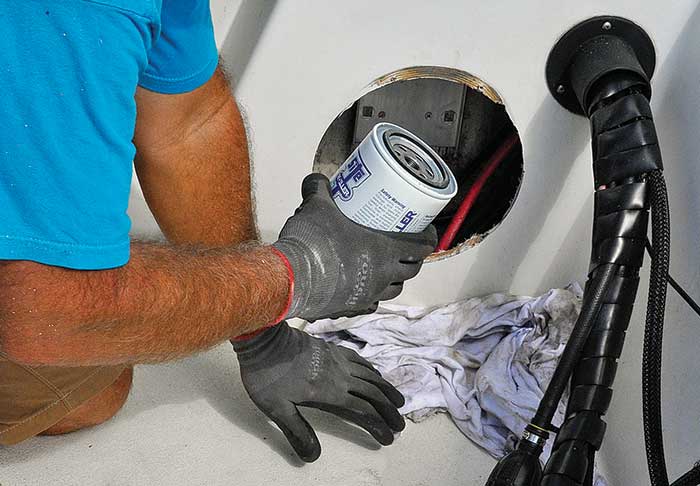
7. I now spin in the new Moeller filter element with the Clear Site drainable base and hand tighten. Lightly lubricate the gasket on the filter with a bit of oil first to help seal the connection.
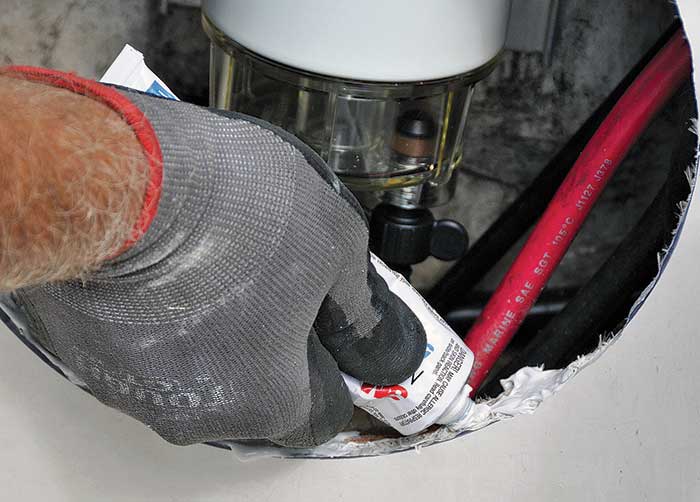
8. Using 3M 5200 adhesive, I seal the edges of the enlarged access hole to keep the seam watertight once the deck plate's mounting base is screwed into place.
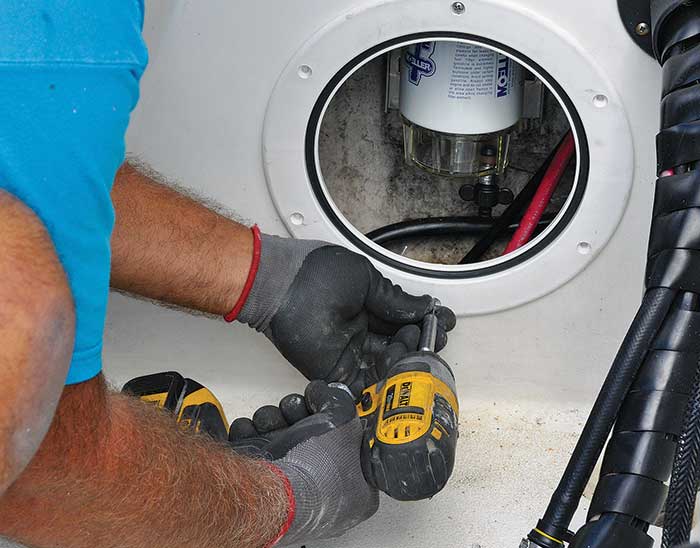
9. Now I'm ready to slip the deck plate base into place and secure it. Because they were in good shape, I was able to reuse the stainless steel screws that held the former deck plate.
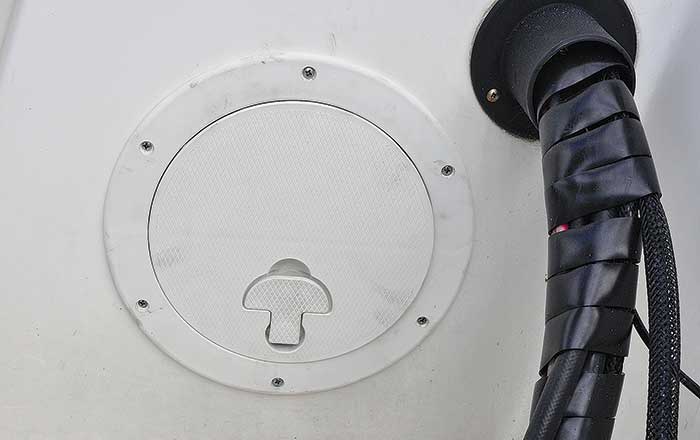
10. The result is increased access to an easy-to-see water-separating and drainable fuel filter system.
